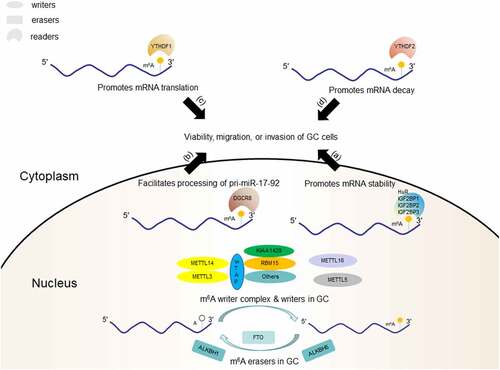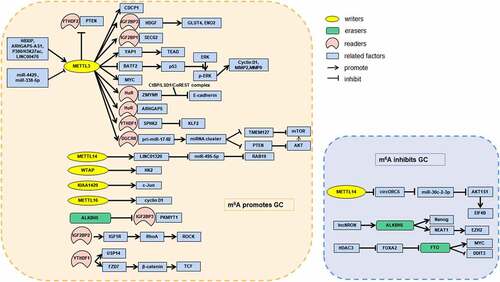Figures & data
Table 1. Changes in total RNA m6A in GC.
Table 2. m6A-modified mRNAs in GC.
Table 3. m6A-modified ncRNAs in GC.


